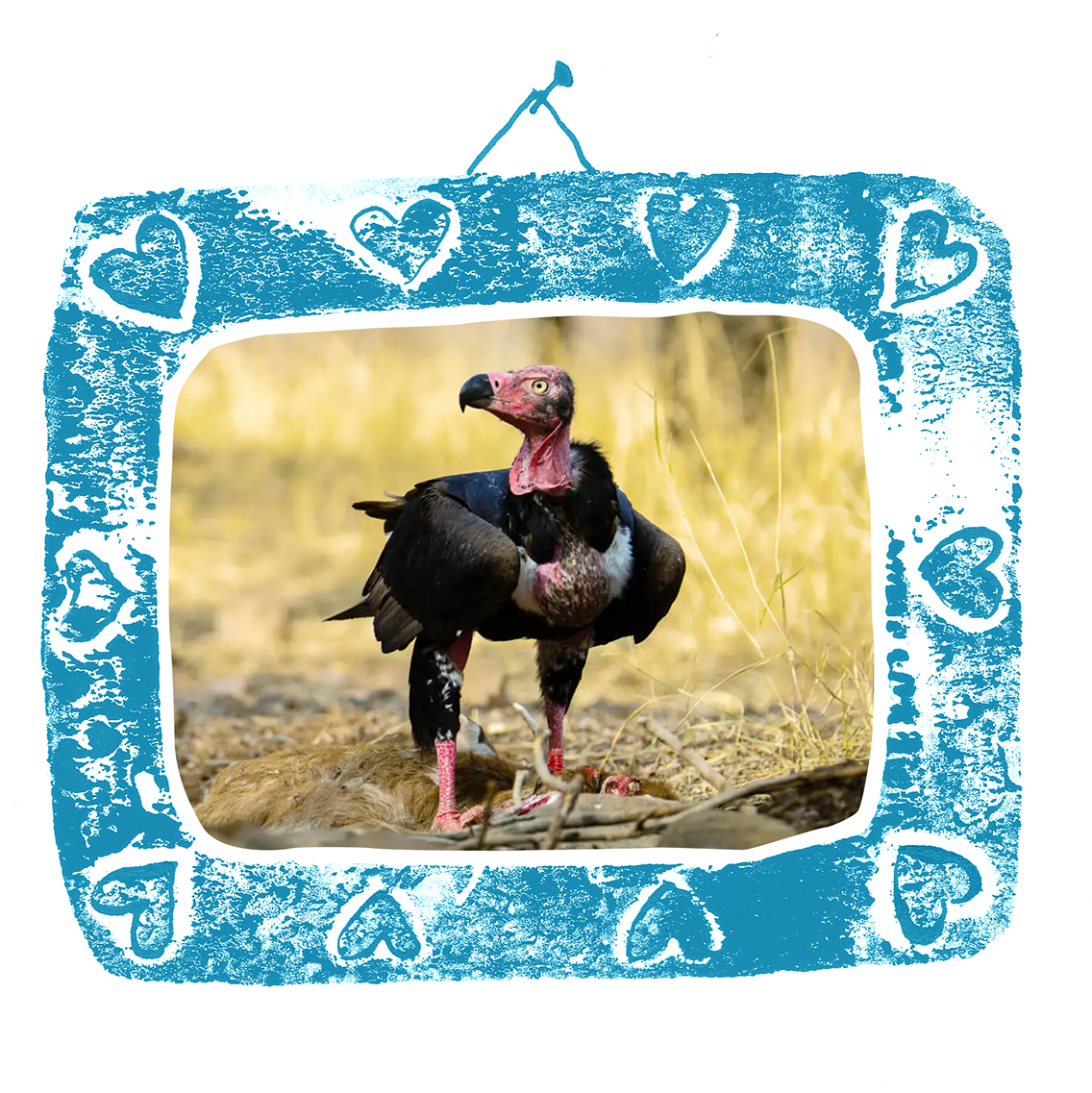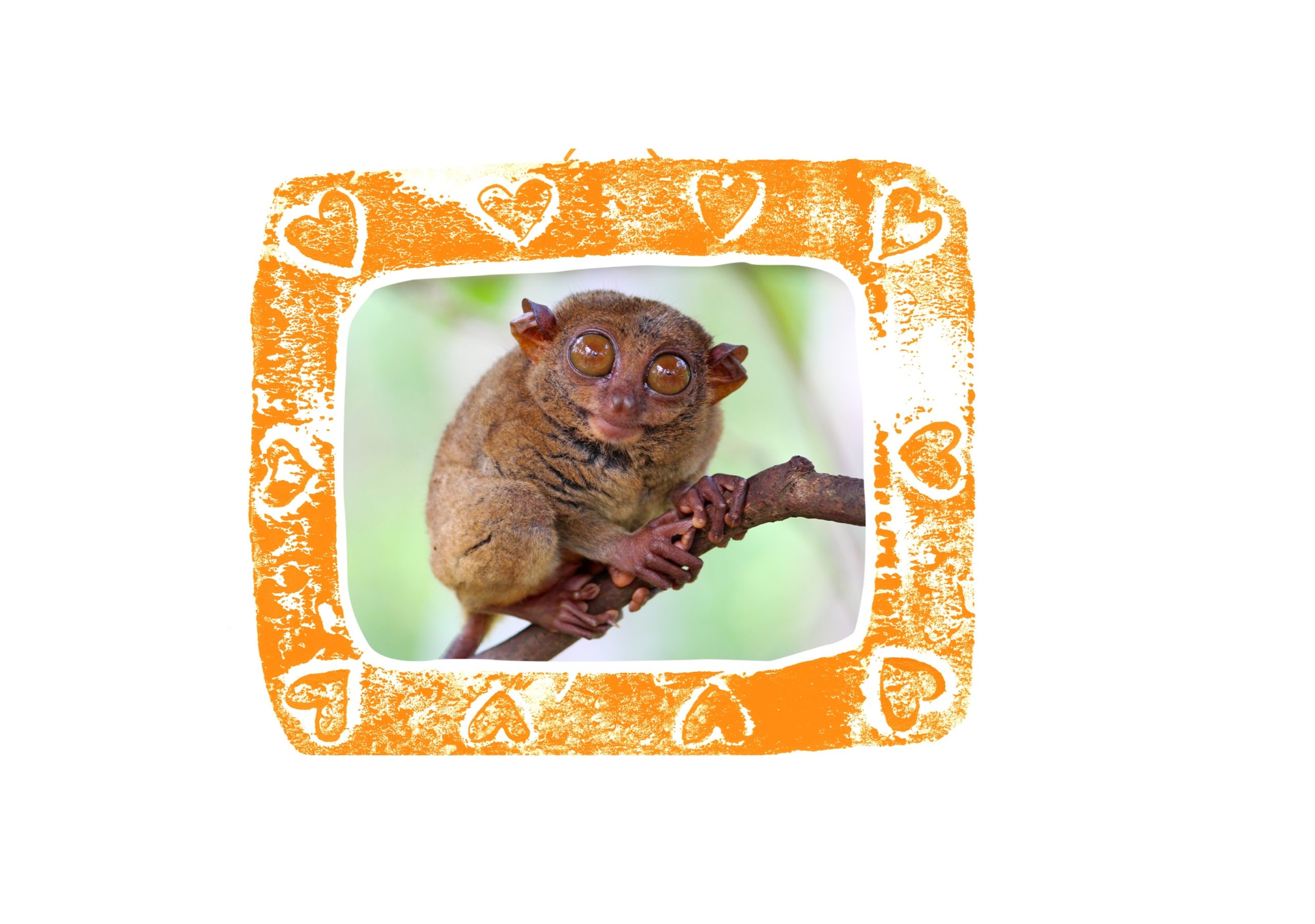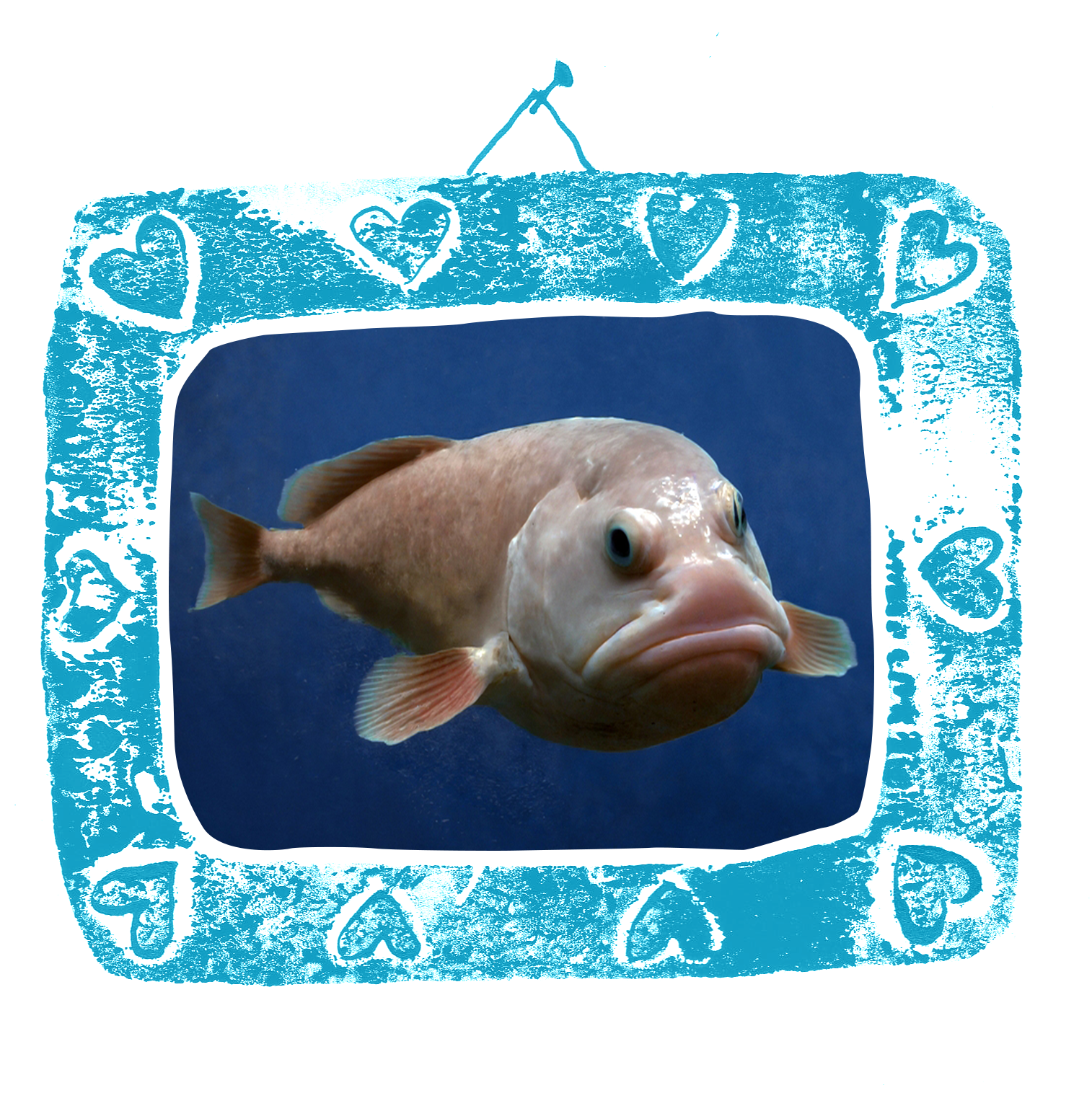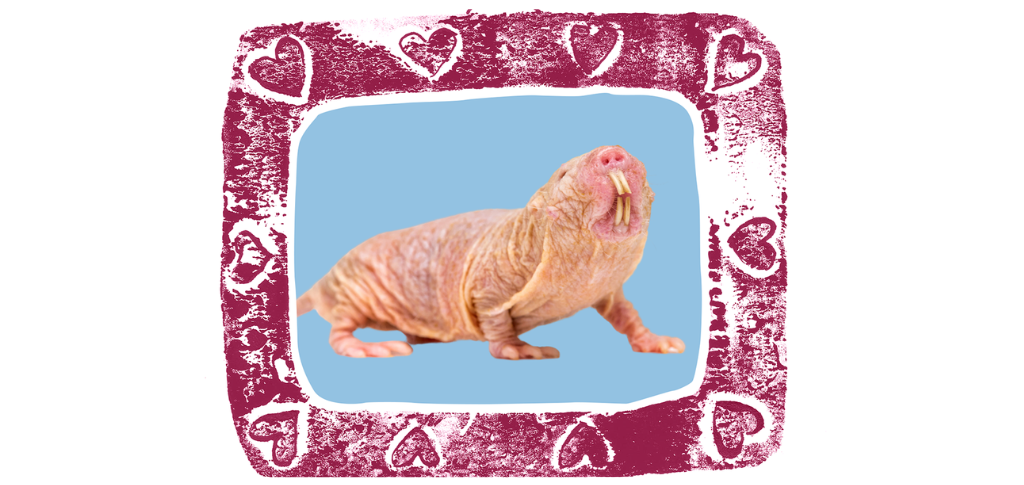Text Francisca Virtuoso
Unjustly so, says ecologist Francisca Virtuoso, who aims to correct this through her project Love the Ugly. On Resource-online, she writes a beautiful story about an ugly animal every few weeks.
Lappet-faced vulture (Torgos tracheliotos)
The largest (and arguably ugliest) vulture in Africa can reach almost 3 meters in wingspan! With some authentic scavenging strategies, personal hygiene habits and great parenting skills, lappet-fac ed vultures are pretty fascinating!
Bad street boys
Rumor has it that lappet-faced vultures make life possible for other vultures. With their extremely powerful bill, they are able to open up carcasses of larger animals that are otherwise inaccessible to most birds of prey. Known as a bit of a bully, these huge birds are one of the most aggressive species, dominating over other vultures. When around a carcass, they’ll often spend more time scaring away other vultures and jackals with growling and grunting, than actually eating. Other scavengers may submit and step aside until the large bird finishes its meal.
Other times, the lappet-faced vulture may step aside while other scavengers are finishing with their share of the carcass. Then, it eats whatever is left behind, pleasingly feasting on the tough tendons, ligaments and even bones that others cannot digest. The lappet-faced vulture has access to these yummy parts of the body because of its particularly strong beak, but also because its stomach acid is so powerful that it dissolves bones while keeping the bird safe from pathogens and harmful bacteria.
Whether eating first or last, these are some hungry vultures, consuming up to 1.5 kg of food in one meal. Most vulture species are obligate scavengers – meaning they only eat flesh of animals that are already dead. But lappet-faced vultures complement their menu with animals they kill themselves, such as flamingos, hares, reptiles or fish.
Clean-up crew: trading looks for hygiene
There is a misconception that vultures are dirty animals, because their diet consists of dead animals. This couldn’t be farther from the truth! I’d say vultures are extremely concerned with hygiene, in at least three different ways.
First, their looks: yes, there’s a reason for the ugly bald head! When vultures eat, they often have to put their head through carcasses that may have been dead for several hours. If bits of rotten meat get stuck in feathers, these could bring with them harmful bacteria that could cause diseases. Instead, their bald heads are much easier to clean after a messy meal. The lappets that give these vultures their name also play a role in ensuring that particles of meat or blood are blocked out of their ears.
Secondly, the lappet-faced vultures love to bathe and are often found chilling around watering holes. In fact, that’s the only time you’ll find these solitary animals in groups. A featherless head is much easier to stick in water, but also much easier to let the sunshine in! These vultures can extend their necks to dry their bald heads and finish up their hygiene routine with a shine.
Finally, vultures are the true clean-up crew of nature! By consuming dead and decaying animals, vultures and other scavengers make sure there is no rotten meat around to spread diseases. One hundred of these vultures could clean up a large carcass in a few minutes! They don’t only keep themselves clean but their environment as well!
The art of good parenting
Despite their reputation as bullies, lappet-faced vultures are great parents! These birds are monogamous and mate for life, meaning the partner they choose will stick around. They start by cooperatively building a huge nest form twigs and sticks, that can extend to 2 meters in diameter! They make sure to build these as far as possible from other vultures, by choosing the top of thorny trees, in an otherwise open landscape. Then, the female lays a single egg, which both parents incubate for 8 weeks until it’s ready to hatch.
Both parents work hard to care for their chick, by alternating on constantly being around the nest for the first 2 months. They have several tasks during this period, including protecting the nest against threats such as other birds of prey, or bringing food which they regurgitate for the chick to eat. Their parenting skills are so impressive that some researchers have even observed them providing shade for their nestlings by spreading their wings above them, like a sunshade!
Francisca Virtuoso is a PhD candidate in Wildlife Ecology and Conservation. Next time in Love the Ugly, learn about the earthworm, often considered ‘gross’ and ‘ugly’ by many, but an invertebrate without which life could vanish off the Earth. Is there an ugly animal you would like to see in the spotlight? Send a message via @love_the_ugly.

 Lapped-faced vulture. Photo Sumeet Moghe/Wikimedia Commons
Lapped-faced vulture. Photo Sumeet Moghe/Wikimedia Commons 

